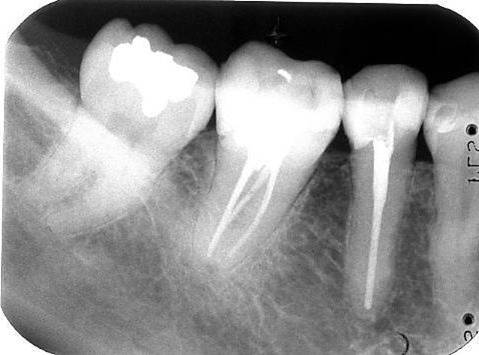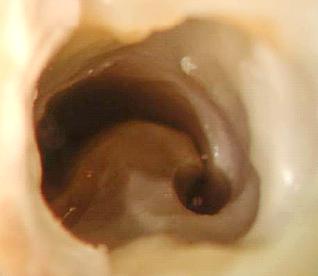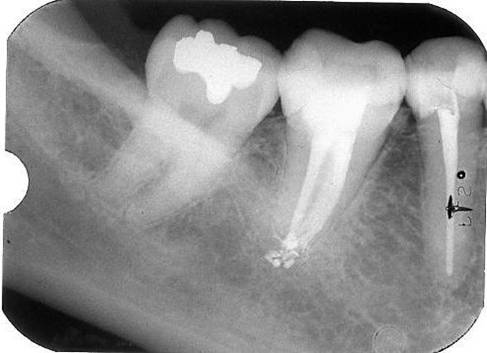
InformationPrimary endodontic treatment Endodontic retreatment Special treatments Endodontics step by stepProduct catalogueOrder and payment information Previous special offers Hand instruments Rotary instruments Operating Microscope General instruments Accessoires Filling materials MiscellaneousRemainingReferences Site map Presentations (RECOMMENDABLE!) Downloads Het Kanaal Links Endoplaza Forum MarketPlaza About Endoplaza Instructions for use website
|

A C-Shaped Canal
A C-shaped canal occurs now and then in the lower molars, more often in the second lower molar than in the first one.
 You also should think of a C-shaped canal if all of a sudden all canals are empty when hypochlorite is aspired from one single canal. Sucking is done by bringing the needle of the hypochlorite syringe far to the apical and then by aspirating. This is standard procedure when the canals have to be dried at the end of an endodontic treatment.
You also should think of a C-shaped canal if all of a sudden all canals are empty when hypochlorite is aspired from one single canal. Sucking is done by bringing the needle of the hypochlorite syringe far to the apical and then by aspirating. This is standard procedure when the canals have to be dried at the end of an endodontic treatment.A good preparation of a c-shaped canal is extraordinary difficult. It is handy to prepare first canals distolingually and mesolingually. This can be done in the usual way as described with the primary endodontic treatment. Then you can continue in two ways. The first way is to prepare a canal at any place where a hand file The most convenient way to fill the complex canal system is to do it with a combination of System B 
From this page you can order the following products in our catalogue
To last chapter: Bleaching an element To next chapter: Deep dividing canals |